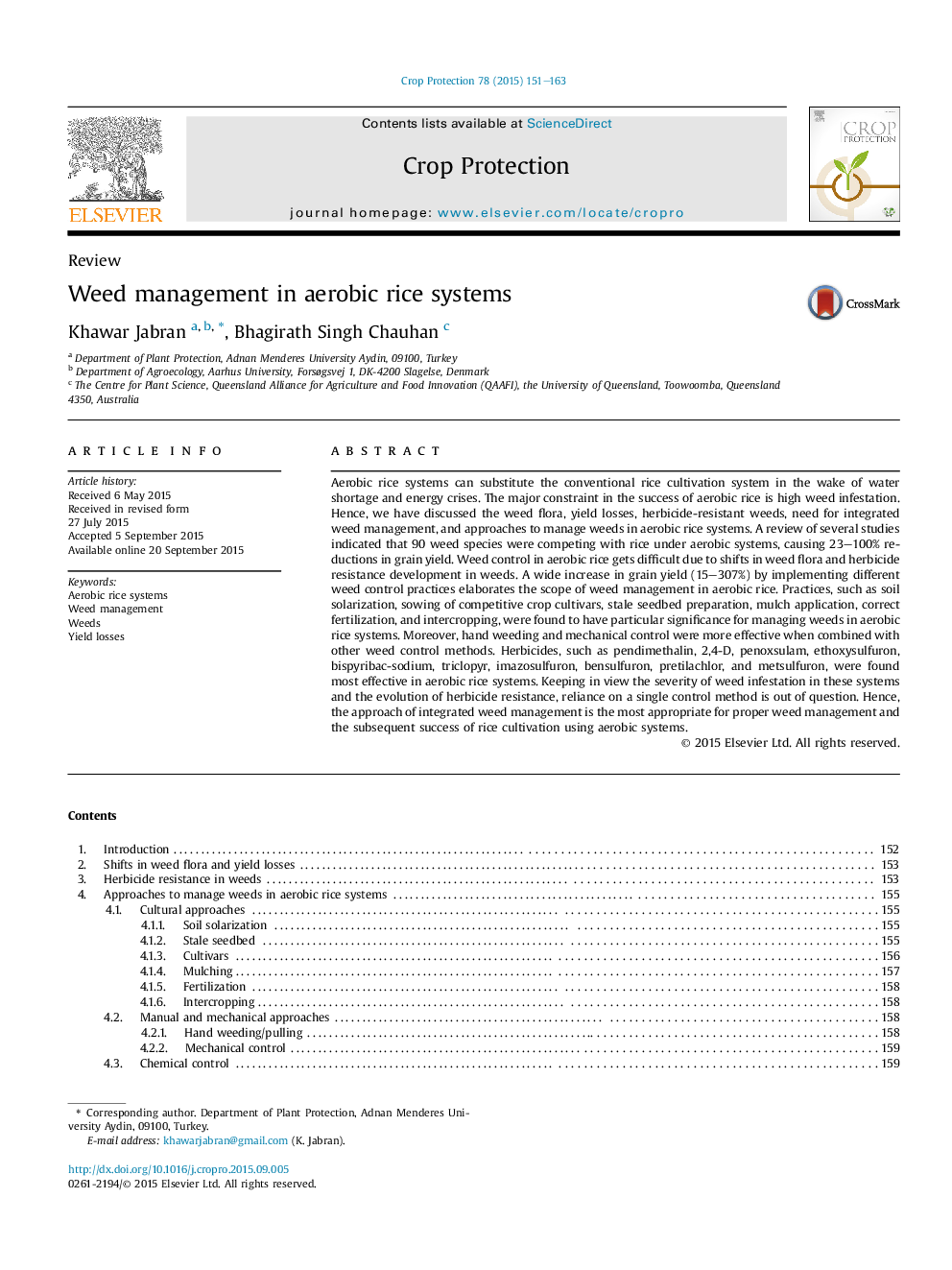| کد مقاله | کد نشریه | سال انتشار | مقاله انگلیسی | نسخه تمام متن |
|---|---|---|---|---|
| 4505682 | 1624309 | 2015 | 13 صفحه PDF | دانلود رایگان |
• More than 90 weed species infest aerobic rice systems.
• Weeds cause a 23–100% reduction in grain yield of rice under aerobic systems.
• Grain yield is significantly (15–307%) if weeds are controlled in aerobic rice.
• Integrated weed management helps to improve the aerobic rice productivity.
Aerobic rice systems can substitute the conventional rice cultivation system in the wake of water shortage and energy crises. The major constraint in the success of aerobic rice is high weed infestation. Hence, we have discussed the weed flora, yield losses, herbicide-resistant weeds, need for integrated weed management, and approaches to manage weeds in aerobic rice systems. A review of several studies indicated that 90 weed species were competing with rice under aerobic systems, causing 23–100% reductions in grain yield. Weed control in aerobic rice gets difficult due to shifts in weed flora and herbicide resistance development in weeds. A wide increase in grain yield (15–307%) by implementing different weed control practices elaborates the scope of weed management in aerobic rice. Practices, such as soil solarization, sowing of competitive crop cultivars, stale seedbed preparation, mulch application, correct fertilization, and intercropping, were found to have particular significance for managing weeds in aerobic rice systems. Moreover, hand weeding and mechanical control were more effective when combined with other weed control methods. Herbicides, such as pendimethalin, 2,4-D, penoxsulam, ethoxysulfuron, bispyribac-sodium, triclopyr, imazosulfuron, bensulfuron, pretilachlor, and metsulfuron, were found most effective in aerobic rice systems. Keeping in view the severity of weed infestation in these systems and the evolution of herbicide resistance, reliance on a single control method is out of question. Hence, the approach of integrated weed management is the most appropriate for proper weed management and the subsequent success of rice cultivation using aerobic systems.
Journal: Crop Protection - Volume 78, December 2015, Pages 151–163
